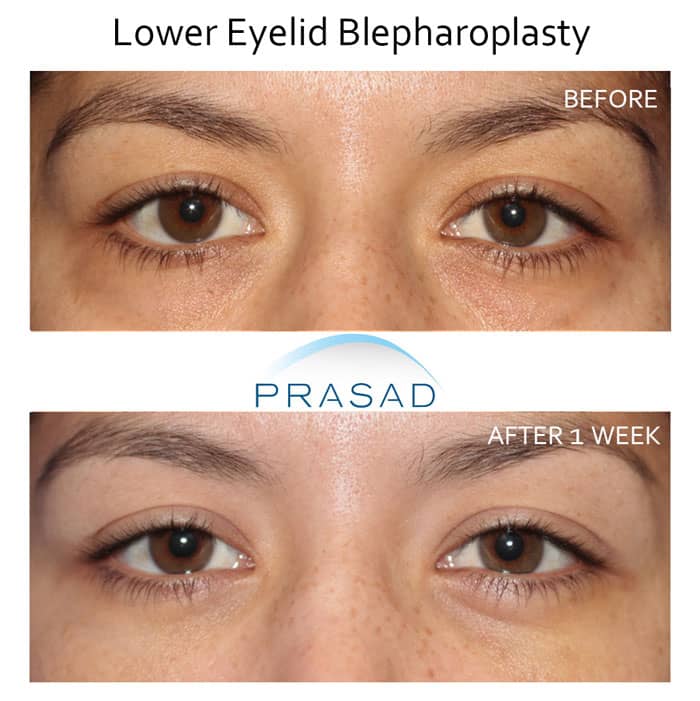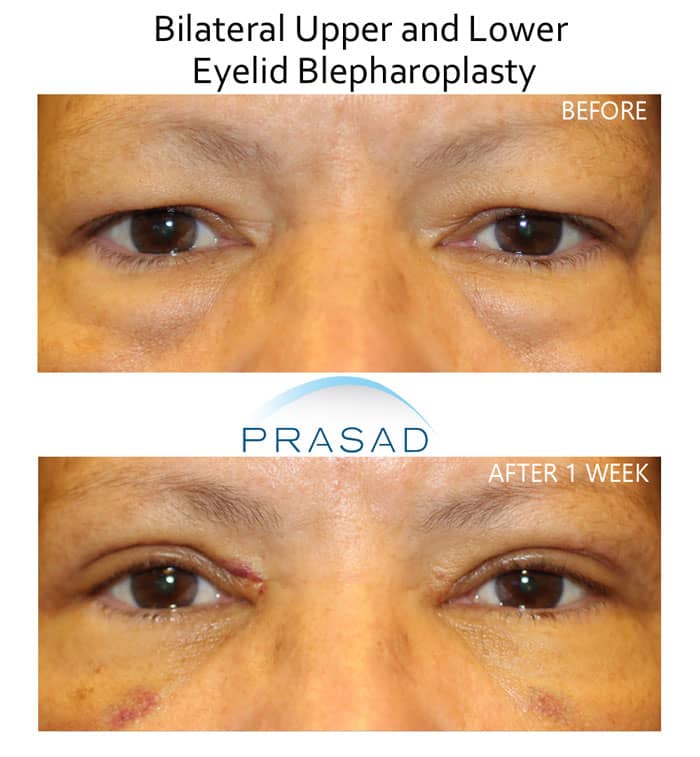Benefits of Blepharoplasty Done Under Local Anesthesia

One of the most common concerns about cosmetic surgery is the worry of going under general anesthesia. Although general anesthesia can be delivered successfully, the prevalent risks are undeniable. In my practice, I’ve devised a technique for eyelid surgery that allows my patients to avoid the risks, discomfort associated with general anesthesia.
My goal for each patient I treat is to achieve extraordinary results, reduce health risks, and expedite recovery. These fundamental concepts are applied to all of the procedures I perform. I’ll go into more detail about my method and approach to performing cosmetic eyelid surgery in my practice without needing general anesthesia.
After medical school, I began my residency, which led to me practicing cosmetic eyelid surgery without general anesthesia. I received ophthalmology training before specializing in cosmetic eyelid surgery, and general cosmetic surgery. In ophthalmology, I learned about the use of local anesthetic and sedation during intraocular or eye surgery.
During my subsequent training in oculofacial plastic surgery, and general cosmetic surgery, I posed a simple query: if we can perform sensitive microsurgery inside the eye, such as cataract surgery, without general anesthetic, why can’t we provide the same level of anesthesia for cosmetic surgery around the eye?
The Common Side Effects of General Anesthesia
Observing operations such as eyelid surgery conducted under general anesthesia following my residency, I frequently witnessed the terrible side effects of general anesthesia.


If you Google “most common problems after general anesthesia,” you’ll get a long list of side effects, including nausea and vomiting, as well as a sore throat caused by the tube placed in the windpipe to allow you to breathe. You will also experience problems sleeping, and constipation. Taking it a step further, if you Google “most common complications after general anesthesia,” you’ll see conditions like blood clots in the legs that can spread to your lungs, among other heightened risks.
It should be logical that if you can avoid the risks and complications associated with general anesthesia, you would prefer a safer choice. After completing my training, I chose to create my own method for conducting eyelid surgery under local anesthetic with LITE IV sedation as needed.
At the time, my approach was met with a lot of hostility, as I recall some of my senior colleagues publicly criticizing me for it. These surgeons appeared to believe that the technological obstacles were too enormous to overcome, and that performing cosmetic surgery without general anesthesia was too tough.
In my perspective, they were speaking from a position of inertia, and general anesthesia was more convenient for their chosen working style. I put myself in my patient’s shoes and asked, if you were related to me, would I prescribe general anesthesia for cosmetic eyelid surgery? The response was “no.” Not if there is a lower-risk choice. So, how did my anesthesia system influence my patients’ outcomes?
Benefits of Using Local Anesthesia During Eyelid Surgery
I learned that avoiding general anesthesia was not only advantageous to my patient’s health and recovery, but it also gave me a technical advantage when doing surgery. I realized that nuanced artistry in technique is more possible in my hands when the patient’s face is not entirely paralyzed by general anesthetic. I prefer to observe the face in its natural form, which local anesthetic allows me to do. I will admit that performing delicate cosmetic eyelid surgery under local anesthesia with LITE IV sedation requires a higher level of skill and efficiency than general anesthesia.


Using this approach, I may perform a wide range of cosmetic and reconstructive eyelid surgeries under local anesthetic with LITE IV sedation as needed. Upper and lower eyelid blepharoplasty, Asian double eyelid surgery, ptosis surgery, eyelid retraction surgery, correcting eyelid damage from thyroid eye disease, as well as revision surgeries for issues from previous eyelid surgeries, such as lower eyelid retraction, and skin graft surgery can all be done under local anesthesia instead of general anesthesia.
After establishing the huge reduction in risk, and optimization of results let’s look at my patients’ recovery experiences. My patients always compliment us on the ease with which they get back from surgery. They are overjoyed to see how well they feel after surgery and how quickly they can resume their daily routines. Furthermore, individuals frequently report having felt no pain or discomfort thereafter.
This regular experience at our office inspired us to coin our own name for the anesthetic experience. Our name is LITE™ Anesthesia, with the “E” representing “ease of recovery.” We meet our patients one week after eyelid surgery, and consistently see minimal to no bruises at that time.
This implies that our patients can return to work and other activities with little to no post-operative bruising after having undergone surgery a week prior. As stated previously, cosmetic treatments are elective procedures that are typically performed on people who are in good health, or have medical issues that can be managed with medication. As such, doing everything I can to decrease the risk to your health is just as critical as doing a technically flawless procedure. I’d also add that your recovery should be as quick as possible, with little to no discomfort. I hope this information from my experience was helpful to you.
Can blepharoplasty be done with local anesthesia?
Yes, local anesthesia with LITE™ IV sedation for eyelid surgery has proven to be effective, which is why we use it every day in our offices. I use this approach for upper and lower eyelid blepharoplasty, Asian double eyelid surgery, ptosis surgery, eyelid retraction surgery, and so on. Patients avoid the side effects of general anesthesia, feel little to no discomfort after surgery, and can quickly resume their daily activities.

Eyelid Surgery Manhattan, NYC and Long Island, New York
Dr. Amiya Prasad is a Diplomate of the American Board of Cosmetic Surgery and a Fellowship-trained oculofacial plastic and reconstructive surgeon. He’s been in practice in Manhattan, New York City and Garden City, Long Island, New York for over 25 years. If you’re interested in recommendations for your individual situation, you may call any of our offices at (212) 265-8877 in Manhattan, New York City; (516) 742-4636 in Garden City, Long Island; or (703) 356-1336 in Vienna, Virginia, or fill up the form below to schedule an appointment.

